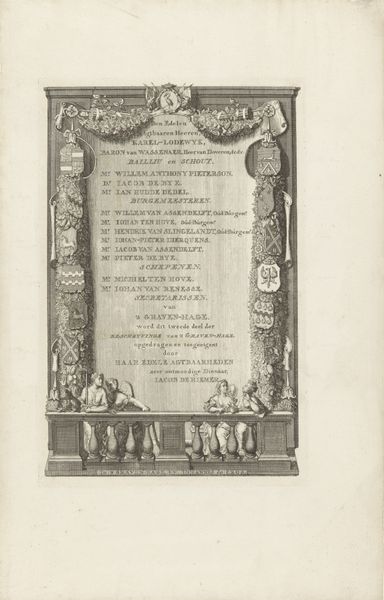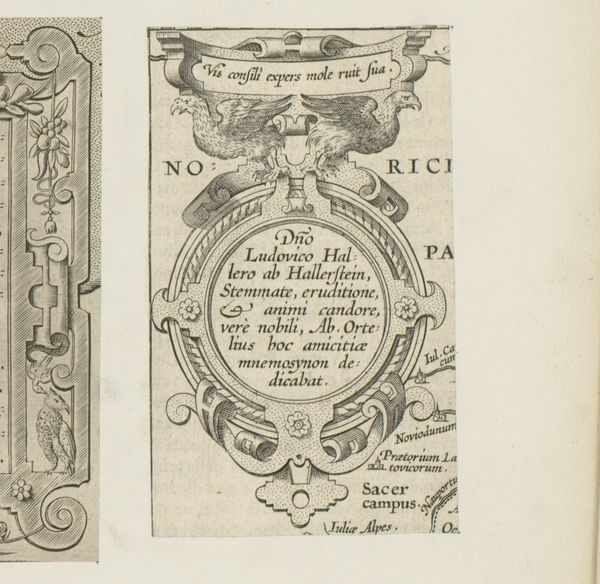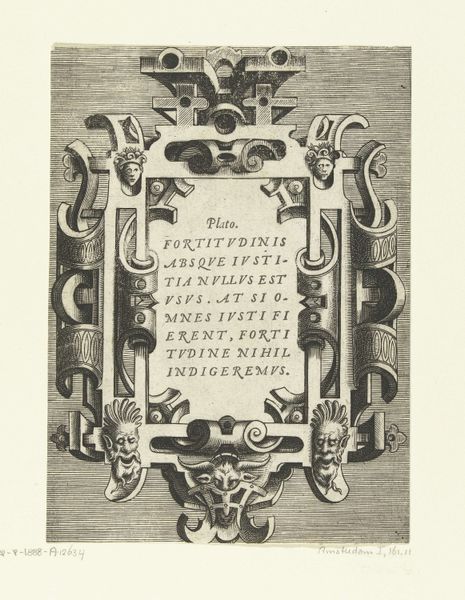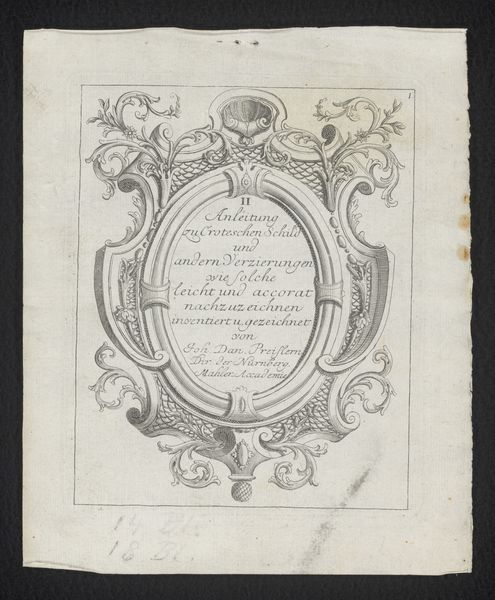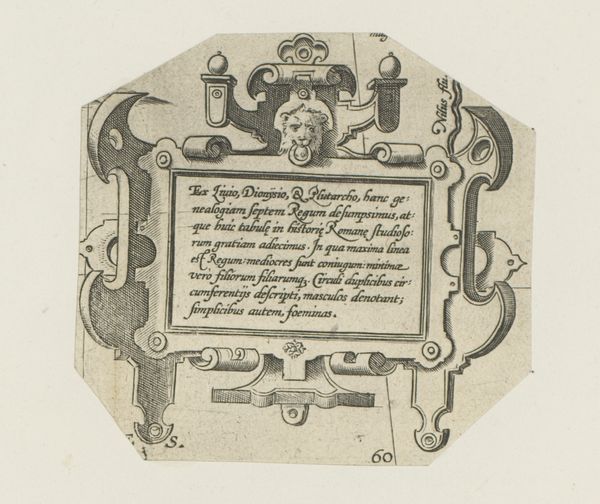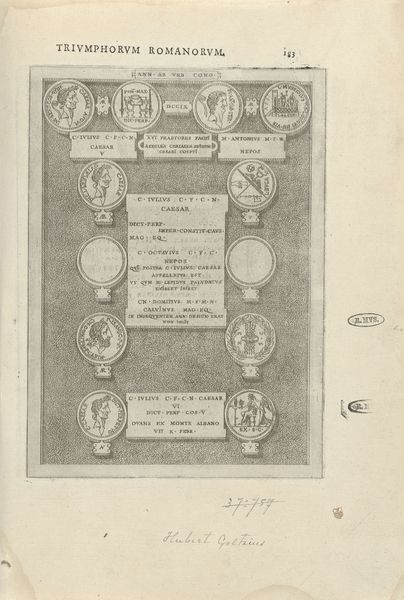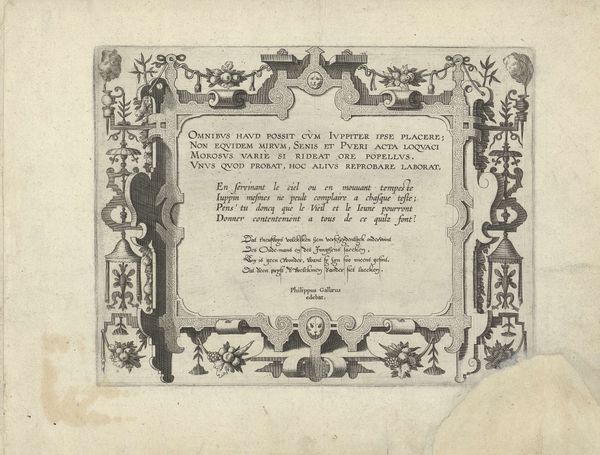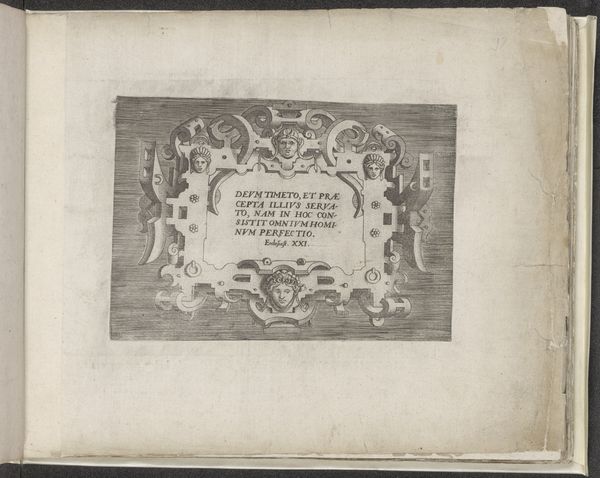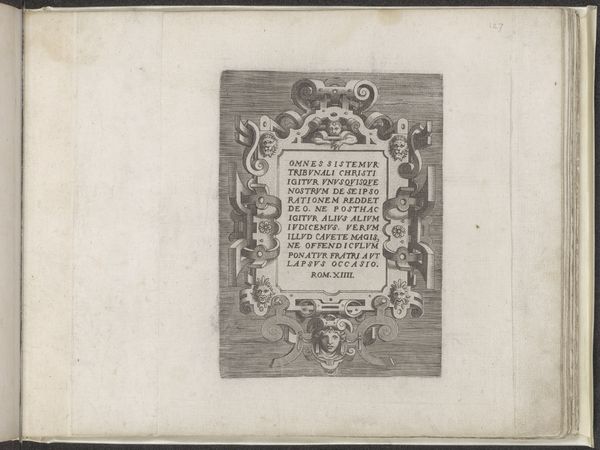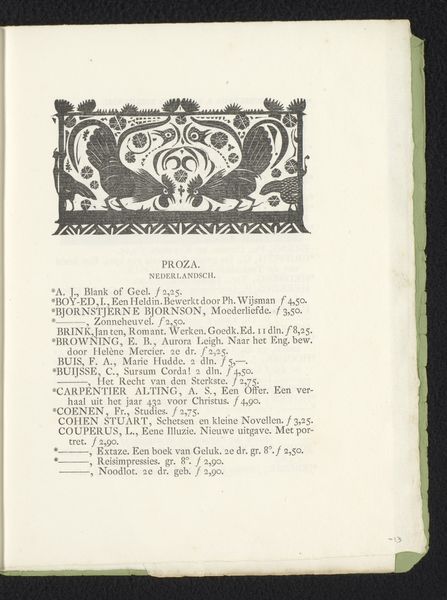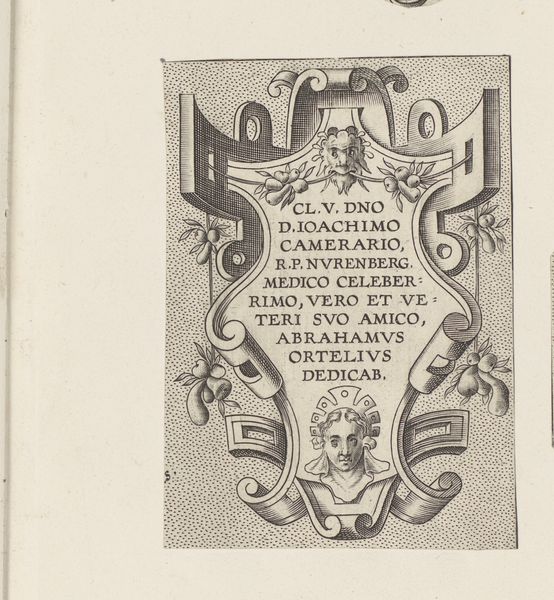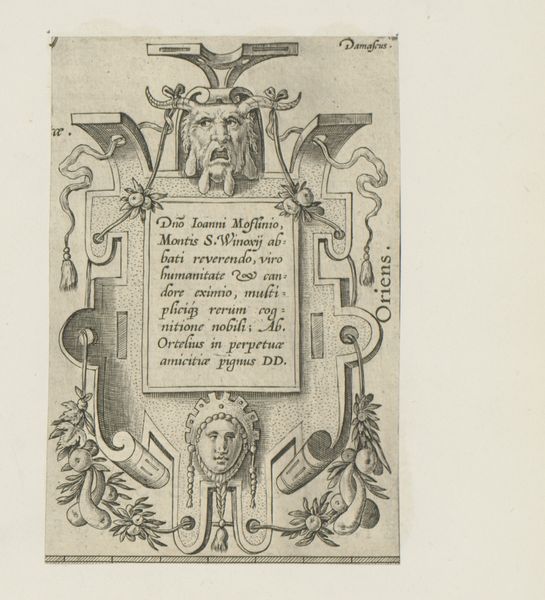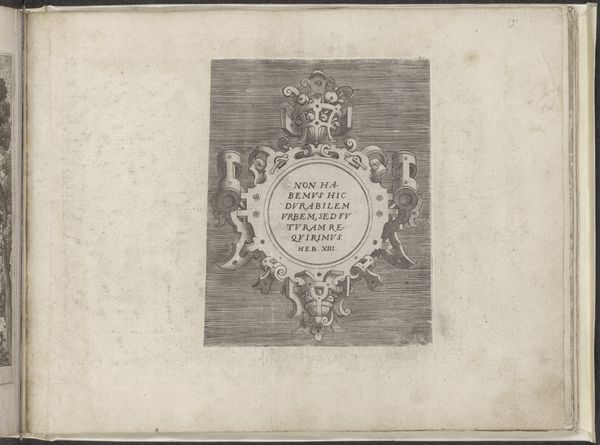
graphic-art, print, engraving
#
graphic-art
#
medieval
# print
#
pen sketch
#
sketch book
#
hand drawn type
#
11_renaissance
#
personal sketchbook
#
sketchwork
#
geometric
#
pen-ink sketch
#
line
#
pen work
#
sketchbook drawing
#
storyboard and sketchbook work
#
sketchbook art
#
engraving
#
calligraphy
Dimensions: height 97 mm, width 94 mm
Copyright: Rijks Museum: Open Domain
Curator: Here we have "Cartouche met namenlijst," or "Cartouche with a list of names," a print created around 1595 by an anonymous artist. It’s an engraving showcasing calligraphy within a decorative frame. What strikes you immediately? Editor: The rigidity, ironically, in something meant to be beautiful. The text seems assertive, a list presented without warmth, like a ledger or official decree, despite the ornamental flourishes around it. Curator: Precisely. The lines are deliberate, controlled. Note the symmetry and the balance achieved through the contrast of positive and negative space. The cartouche itself, with its geometric structure, provides a frame within a frame, drawing attention to the list. Editor: I find it curious that the inscription declares the sites are "unknown." This confession reshapes my understanding—it speaks volumes about power, knowledge, and how authorities record geography, whether familiar or unclaimed. Curator: Indeed. The calligraphic skill is evident, each letter carefully rendered, conforming to Renaissance standards of elegance and legibility. It invites close study of the letterforms. The materiality of the print, the stark contrast of black ink on paper, is fundamental to its power. Editor: Perhaps it’s a purposeful gesture towards highlighting those "unknown" places or those unnamed within its context. It could symbolize marginalization or places deliberately left out. Who decides what remains unmapped or unknown? What voices were deemed not worthy of remembrance? Curator: That interpretation broadens our view beyond the aesthetic considerations and leads us into socio-historical readings. The beauty is contained, disciplined—there are definite limits, as if to say, this far, and no further. Editor: Well, while the image is contained, the questions this artwork ignites within a contemporary viewing cannot be, right? This forces the past to converse directly with our present and challenge who we are as people who write, record, and omit histories. Curator: A potent ending reflection on the enduring strength that resides in those forgotten edges of our mapped histories. Editor: I concur; let’s hold it there and permit everyone to delve deeper into our global, but shared inheritance.
Comments
No comments
Be the first to comment and join the conversation on the ultimate creative platform.
